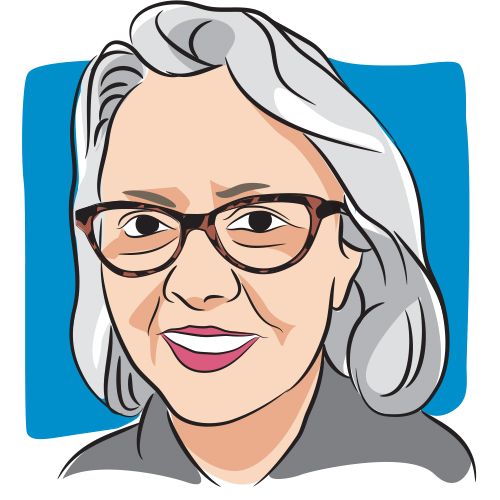Article
The Complexity of Decision-Making for Early-Stage Breast Cancer Treatment
Author(s):
Navigating discussions around treatments for early-stage breast cancer may be difficult, but feeling comfortable with one’s cancer team and knowing about all the available options may help.
Patients with early-stage breast cancer require a multidisciplinary approach to learn about the wide array of treatment options and the ability to feel comfortable with one’s oncologist to ask pertinent questions, said Dr. Sara M. Tolaney.
Throughout this year, the Food and Drug Administration has approved several systemic treatments for patients with early-stage breast cancer, which has dramatically changed outcomes in these patients, said Tolaney, a breast medical oncologist and chief of the division of breast oncology at Dana-Farber Cancer Institute in Boston, at CURE®’s Educated Patient® Breast Cancer Summit. CURE® also spoke with Tolaney to learn more about the importance of multidisciplinary care and how to navigate difficult discussions with the cancer team.
CURE®: Why is it so important for patients and their caregivers to learn more about multidisciplinary approaches to early-stage breast cancer treatment from a medical oncologist’s perspective?
Tolaney: Our thinking has evolved quite a bit in terms of how we approach treating patients who have early-stage breast cancer, whereas decision-making is quite complex (now). It does take interacting with other specialists to make an optimal treatment plan for a patient.
For example, even though I’m a breast medical oncologist, I do see patients in conjunction with my colleagues and breast surgical oncology, for example, as well as in breast radiation oncology. The reason is that, when we see a new case of a new diagnosis of breast cancer, we’re trying to figure out: Should that patient go to surgery first? Or should they get some systemic therapy before they go to surgery? How would that treatment potentially impact the surgical decision-making process? How could it also potentially impact whether radiation will be needed? There are just so many decision points that need to (be considered)—impacts of therapy on lymph node status and whether someone really needs an X-ray dissection.
These are all conversations that take a lot of different people to make decisions about. That’s the nice part of multidisciplinary care. It allows you to get input from multiple specialists to come up with the best-informed plan.
What do you think are the major takeaways from your presentation?
The exciting part of it all is that there are a lot of new, great systemic treatments for patients. This has dramatically changed even just in the past year, honestly. We’ve seen approvals for new agents for early-stage breast cancer. To me, this is probably one of the biggest take-home messages. We are making dramatic improvements in outcomes in our patients with a lot of new agents that have moved forward. For example, immunotherapy in early-stage triple negative breast cancer, CDK4/6 inhibition with Verzenio (abemacilib) ) for adjuvant therapy of ER-positive breast cancer (and) use of T-DM1 in patients who have residual disease after preoperative therapy for HER2-positive treatment. (These new agents have allowed for dramatic changes. These are) exciting times for patients.
How can patients navigate this process of deciding what treatment is best for them? What questions should they ask their oncologist when making this decision?
You need to feel comfortable with your oncologist so you can ask all the questions because there are a lot of different pieces to treatment (regarding) surgery, whether people need systemic treatments and even radiation therapy. A lot of the questions patients have are: How is this going to affect my day-to-day life? What impact will it have on my quality of life? Can I work through therapy? How am I going to feel during treatment? Am I going to lose my hair during treatment? Will surgery have an impact on my range of motion or how I feel about my body image? What will radiation do to my chest wall area? Will I have pain? (There are) all sorts of questions that patients have, but you need to feel comfortable to ask all those questions. And you want your oncologist to be as straightforward as possible with you about what to expect. The anticipation of everything is probably one of the hardest parts of a new diagnosis — the unknown.
What other advice would you give patients with early-stage breast cancer?
Sometimes decision-making is hard. These days, we (oftentimes) work hand in hand with our patient to make the decision. Back in the old days, doctors would just tell a patient to plan and say, “This is the way it is moving forward,” and not really get the patient input. But in truth, patient input is critical. What kind of breast surgery do you want? Do you want to be able to keep your breast? Is that a big priority to you? If not, would you want reconstruction? These are huge decisions for patients that need to be made in a collaborative manner. That’s an important part of all this, and making sure we make these decisions with our patients’ interests at heart is critical for any of the decisions we make.
Despite all the options and all the different decisions patients have to make, are there still any unmet needs in this area? How can they be addressed?
There definitely are areas where I’d love to see us improve. We (still) struggle with understanding which patients need which therapies. Even though I’m super excited about all the new agents that have moved forward, does every patient really need all these fancy new agents that have some potential toxicities? For example, immunotherapy has had dramatic improvements in preventing recurrence for triple-negative breast cancer, but it does carry some risk of side effects. Does every patient with stage 2 or 3 triple-negative breast cancer really need immunotherapy? The truth is we don’t have some fancy biomarker to help us understand which patients are truly benefiting from the immunotherapy vs not. And that’s the direction we need to go in. We need to be able to better personalize therapies to individual patients so the decisions we’re making are going to spare people unnecessary toxicities if they’re not going to benefit, then give people agents if they are going to benefit. But again, we need to understand what predictors of benefit are to make those decisions. We definitely have a ways to go to get there.
For more news on cancer updates, research and education, don’t forget to subscribe to CURE®’s newsletters here.




